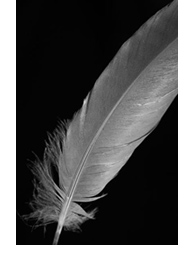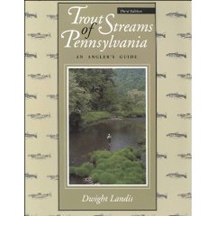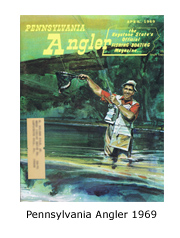You are using an out of date browser. It may not display this or other websites correctly.
You should upgrade or use an alternative browser.
You should upgrade or use an alternative browser.
Getting Started
Blue Liner Flows Review | USGS Stream Gauges
Jun 18
- 269
- 2
All water level data originates from the United States Geological Survey (USGS) Surface-Water Data, which monitors over 13,000 stream gauges across the U.S. and more than 350 in Pennsylvania. The USGS has been transitioning to a new online interface over the past five-plus years. The updated look and feel have left some old features behind while adding new ones. I hate it.
So, I’ve been on the hunt for a desktop and mobile app that delivers USGS backend data through a clean, easy-to-use interface. Blue Liner Flows offers a solid solution for iPhone, iPad and Mac users, with apps built for both platforms. Most importantly, favorites and preferences sync across devices. There’s a free version, but I’ll be reviewing the $6.99 annual paid version.
Key features include: favorites, state selection, map view, latest data overview, discharge in CFS, discharge in feet, average annual discharge, various time views, weather forecasts, alerts, temperatures (station-dependent), turbidity (station-dependent), and other data specific to each gauge.
I found the app very easy to set up on my Mac. Once configured, all my favorites and alerts synced automatically to my iPhone. You don’t need both devices—an iPhone alone works just fine. I especially liked navigating between the state, favorites, and map views. It’s fast and intuitive. Most views display the key information I’m looking for, including directional arrows indicating whether water levels are rising or falling.
[ATTACH type="full" width="720px"...
Fly Fishing Getting Started - Trip Packing
May 18
- 2,253
- 12

So as I gear up for the Paflyfish Jamboree this weekend I have decided to take stock in what I really need to bring on my fly-fishing trips. Normally as I head out on a fishing weekend it looks like I am loaded up and heading out on some a family vacation to Florida. You know the trip where the station wagon is stuffed with crap and all you have to eat is warm chicken and mayo sandwiches as you looked longingly at South of the Border in SC because your parents would never stop. My wife won't let me stop now as any adult, but I'm not bitter.
Lately, I have gotten lazy packing for my trips. I create some lame-*** list that is scribbled on an envelope and I can't even read the damn thing after 30 minutes because it was written in such haste. My mental state is weakened by a litany of sideline questions from my family. I soon find a new sense of urgency to quickly escape before broken door handles and printer problems set me back even further. I must leave as it would be wrong of me to impede what could be wonderful lessons in self-reliance for my family.
Between my weakened mental state and crappy notes, I toss anything that resembles my fly-fishing gear into the truck. Thirty minutes into my trip I remember the first thing I forgot and then in my head I hear Bogey chuckling,"numnutz."
So I am resolved to make a decent list that I can take with me on all my trips and not have my dog laugh at me or so I think.
Gear
Rods, Reel, boots, waders, hat, wading belt, gravel guards, and vest/chest pack
Gear in my chest pack:
Flies (seasonal), tippet, extra leader, strike indicator, split shot, thermometer, polarizing sunglasses, forceps, nippers, Gink floatant, Gore-tex rain...
Fly Fishing Getting Started - Two Ways to Cast
Apr 05
- 804
- 0
Recently I starting working with my son on how to fly-fish. He was a little apprehensive about going out with me our first time. I was pleased to learn that his concern was not because of my wonderful "bark and nag" approach to learning, but rather he was a little intimidated with the thought of have to cast a dry fly right away.
Since we were going out in March I explained that we were going to be using a lot of weighted wooly buggers that first day. We talked about how a roll cast was type of casting we were going to focus on his first day and not anything more complicated like an forward cast. Once understood he was put at ease and really did a good job just working on the roll cast his first day out.
The roll cast is pretty easy and frequently used casting method for subsurface weighted flies and streamers. It is also very good when there is very little room to back cast. The video explains the basic roll cast.
Getting line to carry a traditional dry fly involves the the forward cast. The basics for fly fishing the forward cast involves good timing as you stroke and halt your cast until it is released. In principle energy is built up into the rod and transferred to the line as it moves back and forth. Your fly at the end of your line is just a tourist as the line gets tossed out onto the water. Another video shows good form and practice for the forward cast.
I really encourage that you take some time and practice this out of the water first. Watch the videos so you can visualize the proper method for success in doing this first. Find a nice open field with little wind and give it a go for 30 minutes.
Since we were going out in March I explained that we were going to be using a lot of weighted wooly buggers that first day. We talked about how a roll cast was type of casting we were going to focus on his first day and not anything more complicated like an forward cast. Once understood he was put at ease and really did a good job just working on the roll cast his first day out.
The roll cast is pretty easy and frequently used casting method for subsurface weighted flies and streamers. It is also very good when there is very little room to back cast. The video explains the basic roll cast.
Getting line to carry a traditional dry fly involves the the forward cast. The basics for fly fishing the forward cast involves good timing as you stroke and halt your cast until it is released. In principle energy is built up into the rod and transferred to the line as it moves back and forth. Your fly at the end of your line is just a tourist as the line gets tossed out onto the water. Another video shows good form and practice for the forward cast.
I really encourage that you take some time and practice this out of the water first. Watch the videos so you can visualize the proper method for success in doing this first. Find a nice open field with little wind and give it a go for 30 minutes.
Fly Fishing Getting Started - Rods, Reels & Lines Part 2
Feb 15
- 1,691
- 14
In our previous post we discussed the characteristics of a fly rod. The reel is the next important piece of hardware and serves a much different role than with spin casting. With spin casting a reel is the centerpiece to bring in a fish. Not so much with fly-fishing for trout. When fly fishing for trout in PA the reel primarily holds all the line. With larger fish the fly reel plays a greater role in playing and landing the fish.
The finer fly fishing reels are machined from solid bar-stock aluminum. These higher quality reels will last decades. Most cost hundreds of dollars and in some cases are works of engineering marvel.
 Less expensive reels are made from die cast alloys and perform with less precision. There are many fine products in this class that will last the fly angler for years. My old standby Lamson reel is over 20 years old and is still serving me very well.
Less expensive reels are made from die cast alloys and perform with less precision. There are many fine products in this class that will last the fly angler for years. My old standby Lamson reel is over 20 years old and is still serving me very well.
Several entry-level fly fishing kits provide plastic reels. These plastic reels might be adequate to get familiar with the sport, but don’t necessarily hold up very long.
Aside from a reels defining fit and finish are the materials used in the drag construction. Simpler spring and pawl drags just put a light resistance on the fly line as as it is played off the reel. A higher quality disc drag system provides a smoother, even tension when you apply pressure to the fly line. This can become very important when playing and landing larger fish.
Bigger is not always better, a reel matched for the rod and type of fishing is the way to go. Most trusted manufactures are very clear which reels work best with those criteria.
Our next post gets back to throwing feathers and our fly line.
The finer fly fishing reels are machined from solid bar-stock aluminum. These higher quality reels will last decades. Most cost hundreds of dollars and in some cases are works of engineering marvel.

Several entry-level fly fishing kits provide plastic reels. These plastic reels might be adequate to get familiar with the sport, but don’t necessarily hold up very long.
Aside from a reels defining fit and finish are the materials used in the drag construction. Simpler spring and pawl drags just put a light resistance on the fly line as as it is played off the reel. A higher quality disc drag system provides a smoother, even tension when you apply pressure to the fly line. This can become very important when playing and landing larger fish.
Bigger is not always better, a reel matched for the rod and type of fishing is the way to go. Most trusted manufactures are very clear which reels work best with those criteria.
Our next post gets back to throwing feathers and our fly line.
Fly Fishing Getting Started - Rods, Reels & Lines Part 1
Feb 04
- 1,079
- 4
How do you throw a feather?
You don’t.
You tie the feather to something heavy and then a toss the two of them together. This is the principle behind casting with a fly rod. See how easy fly fishing is!
I wish my friends Ron and Greg would have explained this to me when I first started fly fishing. I think it would have saved me some early embarrassing moments of fly fishing.
 The principle purpose of a fly rod is to deliver the fly line out towards a trout with a fly somehow attached to the situation. More about bad delivery and stupid fly imitations later on. The principle of spin casting is just the opposite as the weight of the lure carries the line to the fish.
The principle purpose of a fly rod is to deliver the fly line out towards a trout with a fly somehow attached to the situation. More about bad delivery and stupid fly imitations later on. The principle of spin casting is just the opposite as the weight of the lure carries the line to the fish.
There is a lot of kinetic energy and physics that is involved, but don’t worry we will get to that later when we cover casting. The good news is that we will cover that before we get to the entomology and biology if you were asking.
To do all this line tossing you need gear that will support that kind of physics. Before we start picking our rod let’s look at the whole fly delivery engine thing one more time. We discussed our rod, but as you can imagine there are many different sizes and types of rods. They are most often differentiated by length and weight. Since we are just getting started most common trout fly rods are between 7’ and 9’ here out East. The most common weight is between 4wt and 6wt. Don’t send me hate mail yet remember I said common.
Most popular modern rods are made of graphite. The very early fly rods were made of bamboo and these handcrafted rods are still highly regarded by many anglers. We are not going to talk about bamboo now because I would then have to go deep and talking about kilts. I think they are silly unless you are drinking scotch then who really cares anyway.
In principle the smaller the fish the smaller and less weight you need in your rod. For bigger fish the...
You don’t.
You tie the feather to something heavy and then a toss the two of them together. This is the principle behind casting with a fly rod. See how easy fly fishing is!
I wish my friends Ron and Greg would have explained this to me when I first started fly fishing. I think it would have saved me some early embarrassing moments of fly fishing.

There is a lot of kinetic energy and physics that is involved, but don’t worry we will get to that later when we cover casting. The good news is that we will cover that before we get to the entomology and biology if you were asking.
To do all this line tossing you need gear that will support that kind of physics. Before we start picking our rod let’s look at the whole fly delivery engine thing one more time. We discussed our rod, but as you can imagine there are many different sizes and types of rods. They are most often differentiated by length and weight. Since we are just getting started most common trout fly rods are between 7’ and 9’ here out East. The most common weight is between 4wt and 6wt. Don’t send me hate mail yet remember I said common.
Most popular modern rods are made of graphite. The very early fly rods were made of bamboo and these handcrafted rods are still highly regarded by many anglers. We are not going to talk about bamboo now because I would then have to go deep and talking about kilts. I think they are silly unless you are drinking scotch then who really cares anyway.
In principle the smaller the fish the smaller and less weight you need in your rod. For bigger fish the...
Fly Fishing Getting Started - Books
Jan 26
- 3,114
- 24
The off season is a great time to look at old books and to explore new ones as well. Some of the early books I read when I was getting started with fly fishing are still good reads and should not be overlooked. The more recent ones hold fresh insight to many of the locations and changes to many of streams in Pennsylvania.
Before you start striping any line or emptying your wallet you might want to take a look at The L.L. Bean Ultimate Book of Fly Fishing
 by Macauley Lord, **** Talleur and Dave Whitlock. It is one of the best all around general fly fishing books there is for any new angler to the sport. Their book provides essential information about flies, bugs, gear, concepts, traditions and everything from Atlantic Salmon to the zug bug.
by Macauley Lord, **** Talleur and Dave Whitlock. It is one of the best all around general fly fishing books there is for any new angler to the sport. Their book provides essential information about flies, bugs, gear, concepts, traditions and everything from Atlantic Salmon to the zug bug.
A lot of good first hand information can be found in Flyfisher's Guide to Pennsylvania (Flyfisher's Guide Series)
 by Dave Wolf and Trout Streams and Hatches of Pennsylvania; A Complete Fly-Fishing Guide to 140 Rivers and Streams
by Dave Wolf and Trout Streams and Hatches of Pennsylvania; A Complete Fly-Fishing Guide to 140 Rivers and Streams
 by Charles Meck. Both books are carried by seasoned anglers. They not only help in the where, but try to make sense of the what before you get into a stream.
by Charles Meck. Both books are carried by seasoned anglers. They not only help in the where, but try to make sense of the what before you get into a stream.
 Reading some of the Pennsylvania fly water type books is how I got...
Reading some of the Pennsylvania fly water type books is how I got...
Before you start striping any line or emptying your wallet you might want to take a look at The L.L. Bean Ultimate Book of Fly Fishing

A lot of good first hand information can be found in Flyfisher's Guide to Pennsylvania (Flyfisher's Guide Series)



Fly Fishing Getting Started - Overview
Jan 19
- 1,558
- 14
A little thrown off with trying to figure out the whole fly-fishing thing?
No worries.
I enjoy getting emails about gear, stream locations, and host of questions. So I am committing to a series of posts that might help look at this whole getting started with fly-fishing thing. It took me a few years to understand a good part of the fly-fishing experience back in the day. Then like life you soon realize more of what you don’t know than what you really understand anyway.
I started fly-fishing while in college and tending bar in Indiana, Pa. I think they were one in the same or at least it felt like a double major. Greg, another numnuts like myself and someone I met at during my studies with my second major, took me up to First Fork in Potter County for a weekend in August. We decided to go fly-fishing for trout! Yippee won’t that be cool.
My first little bit of advice is don’t start fly-fishing for trout in August. I caught 24 fallfish that were no bigger than five inches. Greg said he saw a trout at the bottom of a deep pool in the stream. Personally I think was hallucinating from the August heat. It looked like a stick and was the closest we actually got to any trout that weekend. Naturally after this wonderful experience I was gripped with the sport. Who wouldn’t?
 Early on I spent a lot of time devouring Pennsylvania Fly Fishing books from Landis, Meck and Sajna. I had plenty of time as I certainly wasn’t reading any of my college books as I was part of a special five year and four summer program that didn’t require much reading or English for that matter as you can tell by my posts. I tried to explain to my parents it was a new progressive Bachelor of Arts Program in Geography with an internship at a bar. My mother has two Masters, I am sure she wasn’t buying any of my nonsense and was probably just happy I wasn’t in jail.
Early on I spent a lot of time devouring Pennsylvania Fly Fishing books from Landis, Meck and Sajna. I had plenty of time as I certainly wasn’t reading any of my college books as I was part of a special five year and four summer program that didn’t require much reading or English for that matter as you can tell by my posts. I tried to explain to my parents it was a new progressive Bachelor of Arts Program in Geography with an internship at a bar. My mother has two Masters, I am sure she wasn’t buying any of my nonsense and was probably just happy I wasn’t in jail.
Further reading had me digging into the...
No worries.
I enjoy getting emails about gear, stream locations, and host of questions. So I am committing to a series of posts that might help look at this whole getting started with fly-fishing thing. It took me a few years to understand a good part of the fly-fishing experience back in the day. Then like life you soon realize more of what you don’t know than what you really understand anyway.
I started fly-fishing while in college and tending bar in Indiana, Pa. I think they were one in the same or at least it felt like a double major. Greg, another numnuts like myself and someone I met at during my studies with my second major, took me up to First Fork in Potter County for a weekend in August. We decided to go fly-fishing for trout! Yippee won’t that be cool.
My first little bit of advice is don’t start fly-fishing for trout in August. I caught 24 fallfish that were no bigger than five inches. Greg said he saw a trout at the bottom of a deep pool in the stream. Personally I think was hallucinating from the August heat. It looked like a stick and was the closest we actually got to any trout that weekend. Naturally after this wonderful experience I was gripped with the sport. Who wouldn’t?

Further reading had me digging into the...
